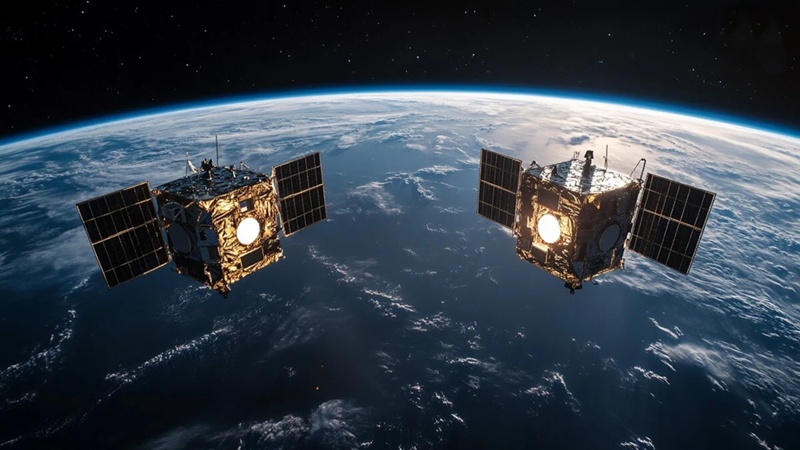As we look toward 2030, the question isn’t if we’ll explore new worlds—it’s how soon we’ll get there. Over the next decade, space exploration will reach new heights. What Are the Biggest Space Milestones to Expect by 2030?
Imagine astronauts setting foot on the Moon for the first time in decades, living and working on its surface, or humans taking their first steps toward Mars. Add to that private companies pushing the boundaries of space travel, and we’re on the brink of an era where the stars aren’t so far away after all. So, what can we expect from the great leap forward in space exploration? The answers are just around the corner.
1. The Artemis Program: Returning to the Moon
NASA’s Artemis program aims to return humans to the Moon by 2025 and establish a sustainable human presence by the end of the decade.
Key Objectives:
- Artemis I (Uncrewed Mission): Launch of the Space Launch System (SLS) and the Orion spacecraft, testing key technologies for human space travel.
- Artemis II (Crewed Mission): NASA plans to send astronauts on a lunar flyby, testing the spacecraft’s life-support systems and mission protocols.
- Artemis III (First Human Landing on the Moon): By 2025, astronauts are set to land on the lunar South Pole for the first time in history, potentially discovering new resources, such as water ice.
Goals for the Decade:
- Lunar Gateway: An orbiting space station around the Moon to serve as a staging point for deeper space exploration.
- Sustainable Lunar Presence: Establishment of habitats, laboratories, and long-term infrastructure.
- Lunar Resource Utilization: Mining water and minerals, potentially aiding future Mars missions.
Estimated Budget:
- NASA’s Artemis Program (2020-2030): $35 billion
- Lunar Gateway: $6-10 billion
2. Mars Missions: The Red Planet Beckons
NASA’s Perseverance Rover and the Mars Sample Return (MSR) Program
NASA’s Perseverance Rover is already conducting key scientific experiments on Mars. By 2030, Perseverance, along with a series of robotic missions, will aim to bring samples back to Earth, possibly as early as 2028.
Key Objectives:
- Mars Sample Return: Collecting and returning Martian soil and rock samples back to Earth to search for signs of ancient life.
- Human Exploration of Mars: NASA plans to send humans to Mars in the 2030s, aiming for a crewed mission in the latter half of the decade.
Other Space Agencies’ Mars Missions:
- ESA’s ExoMars Rover: Searching for evidence of past or present life on Mars, with a new launch planned for 2028.
- China’s Mars Missions: China’s ambitious plans for Mars exploration include a rover mission (Tianwen-2) aiming for sample return by 2030.
Estimated Budget:
- NASA’s Mars Program (2020-2030): $10-15 billion
- ESA’s ExoMars Mission: $1.3 billion (2022 launch)
- China’s Mars Program: $3-5 billion for Mars exploration efforts
3. Commercial Space: The Rise of Private Companies
SpaceX: Expanding Horizons
- Starship Development: SpaceX’s Starship, a fully reusable spacecraft, is designed for missions to the Moon, Mars, and beyond. By 2025-2030, SpaceX aims to revolutionize space travel, lowering costs and enabling large-scale space exploration.
- Starlink and Global Internet Coverage: SpaceX continues to expand its satellite constellation, with Starlink offering global internet coverage by 2030.
- Commercial Lunar Landings: SpaceX will be pivotal in NASA’s Artemis program, with its Starship landing the first astronauts on the Moon and serving as a lunar gateway vehicle.
Other Notable Commercial Ventures:
- Blue Origin: Jeff Bezos’s Blue Origin is targeting regular lunar cargo missions, with plans for the Blue Moon lander by the mid-2020s.
- Virgin Galactic & Axiom Space: These companies are leading the charge in commercial space tourism, space stations, and orbital missions, especially for private astronauts and researchers.
Estimated Budget:
- SpaceX Starship Development: $10-20 billion by 2030
- Starlink Constellation: $30 billion+
- Blue Origin’s Lunar Plans: $2-4 billion for initial lander development and lunar cargo missions
- Virgin Galactic: $1.3 billion to scale commercial space tourism operations
4. Space Habitats: Living and Working in Space
By 2030, space habitats will become a reality. Both governmental and private organizations are planning long-duration space habitats, ranging from orbital stations to lunar bases.
The International Space Station (ISS) Evolution:
- Private Space Stations: Companies like Axiom Space are planning to build private space stations, with Axiom Space Station slated for operation by 2027.
- ISS Decommissioning: The ISS may be decommissioned by 2030, with its functions transferred to commercial stations.
Lunar Bases and Mars Outposts:
- NASA’s Lunar Base: As part of the Artemis program, NASA will develop sustainable habitats on the Moon, which could serve as stepping stones for future Mars missions.
- Mars Base Alpha: Efforts from SpaceX, NASA, and private ventures aim to construct the first Mars outpost by the 2030s. This will likely include artificial habitats, greenhouse farms, and power generation systems.
Estimated Budget:
- Axiom Space Station (2020-2030): $2.5-4 billion
- NASA’s Lunar Habitats: $10-20 billion
- Mars Base Development (2025-2030): $5-10 billion for preliminary research and construction
5. Space Telescopes and Exploration of the Cosmos
James Webb Space Telescope (JWST)
Launched in December 2021, the JWST is poised to revolutionize our understanding of the universe by 2030. Its primary mission is to look deep into the cosmos and observe the formation of galaxies, stars, and planets.
Other Upcoming Space Telescopes:
- Nancy Grace Roman Space Telescope: Expected to launch in 2027, this will study dark energy, exoplanets, and infrared astronomy.
- LUVOIR and HabEx: Proposed NASA missions aiming to study exoplanets, their atmospheres, and the search for life beyond our solar system by the 2030s.
Estimated Budget:
- JWST (2015-2030): $10 billion
- Roman Space Telescope: $3.5 billion
- LUVOIR / HabEx: $10 billion (depending on mission selection)
6. Asteroid Mining: A New Frontier
Asteroid mining will likely be a major focus by 2030. Companies and space agencies are planning missions to capture asteroids, mine valuable resources, and use those materials to support future space missions.
Key Missions:
- NASA’s OSIRIS-REx: After collecting samples from asteroid Bennu, the spacecraft is returning to Earth in 2023. This could provide insight into asteroid composition and resource potential.
- Asteroid Redirect Mission (ARM): NASA’s previous mission concept focused on capturing an asteroid’s rock to be studied by astronauts. Though this mission was canceled, asteroid mining remains an ongoing interest.
- Private Sector Initiatives: Companies like Planetary Resources and Deep Space Industries are developing plans for asteroid mining with the goal of harvesting metals, water, and other valuable materials.
Estimated Budget:
- NASA’s OSIRIS-REx: $800 million (2020-2023)
- Asteroid Mining Ventures: $1-3 billion for initial technology development and missions
7. Ceres Sample Return Mission
NASA is considering an exciting mission to Ceres, a dwarf planet in the Main Asteroid Belt, located about 2.7 AU from Earth. With its unique geological features, particularly Occator Crater, Ceres holds valuable clues about the early solar system and possibly even the conditions that could support life.
Key Objectives:
- Sample Return: Land on Ceres to collect a 100-gram sample of its surface and subsurface materials, potentially including ice and mud.
- Occator Crater: Explore the crater, which may contain remnants of an ancient “mudball” interior—a mixture of water and rock that could have persisted beneath Ceres’ icy surface.
- Subsurface Exploration: Investigate the potential of water-rock mixtures about 35 km below Ceres’ surface, which could offer insights into the building blocks of life.
This mission would vastly improve our understanding of planetary formation, water in the solar system, and the potential for life beyond Earth.
Estimated Budget:
- Total Mission Cost: $3 billion
Sun, Moon, and Stars | Did you know … Facts ?
8. Global Space Cooperation and Diplomacy
Space is increasingly becoming a domain for international cooperation, with countries and organizations working together for mutual goals.
Key Initiatives:
- International Partnerships: Collaborative efforts in space exploration, such as the Artemis Accords, which aim to establish norms for the peaceful exploration of the Moon and other celestial bodies.
- Moon Village Concept: The European Space Agency (ESA) has proposed an international “Moon Village,” which would be a collective, multi-national effort to build a base on the Moon, enabling collaboration between space agencies like NASA, Roscosmos, and the China National Space Administration (CNSA).
Final Thougts:
By 2030, the space frontier will look vastly different from today. Human footprints on the Moon, the first steps toward Mars colonization, and a thriving commercial space sector will form the bedrock of the new space age. Both governments and private enterprises will continue to push the boundaries of what is possible, seeking to unlock the mysteries of the cosmos while laying the groundwork for humanity’s expansion beyond Earth. The next decade promises to be one of the most exciting periods in space history.





Our platform makes available various medical products for home delivery.
Users can easily order essential medicines from anywhere.
Our range includes everyday treatments and more specific prescriptions.
All products is provided by verified providers.
vidalista 40
We prioritize quality and care, with private checkout and on-time dispatch.
Whether you’re filling a prescription, you’ll find trusted options here.
Start your order today and enjoy trusted online pharmacy service.
Our platform features a wide range of pharmaceuticals for online purchase.
Anyone can quickly buy health products from anywhere.
Our product list includes everyday drugs and custom orders.
The full range is provided by licensed pharmacies.
does priligy work reddit
Our focus is on quality and care, with encrypted transactions and timely service.
Whether you’re managing a chronic condition, you’ll find what you need here.
Explore our selection today and experience trusted online pharmacy service.
At this page you can find a lot of valuable information.
It is created to help you with different topics.
You will see clear explanations and everyday examples.
The content is constantly improved to stay current.
https://kenthomas.us
It’s a reliable resource for research.
Anyone can benefit from the materials here.
Begin exploring the site now.